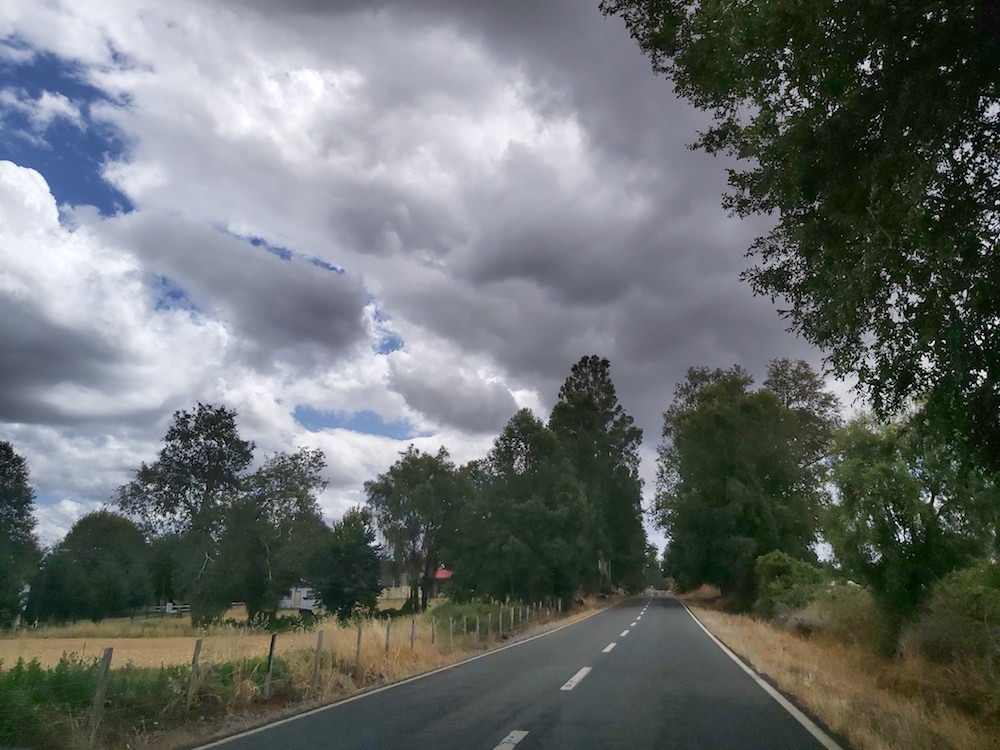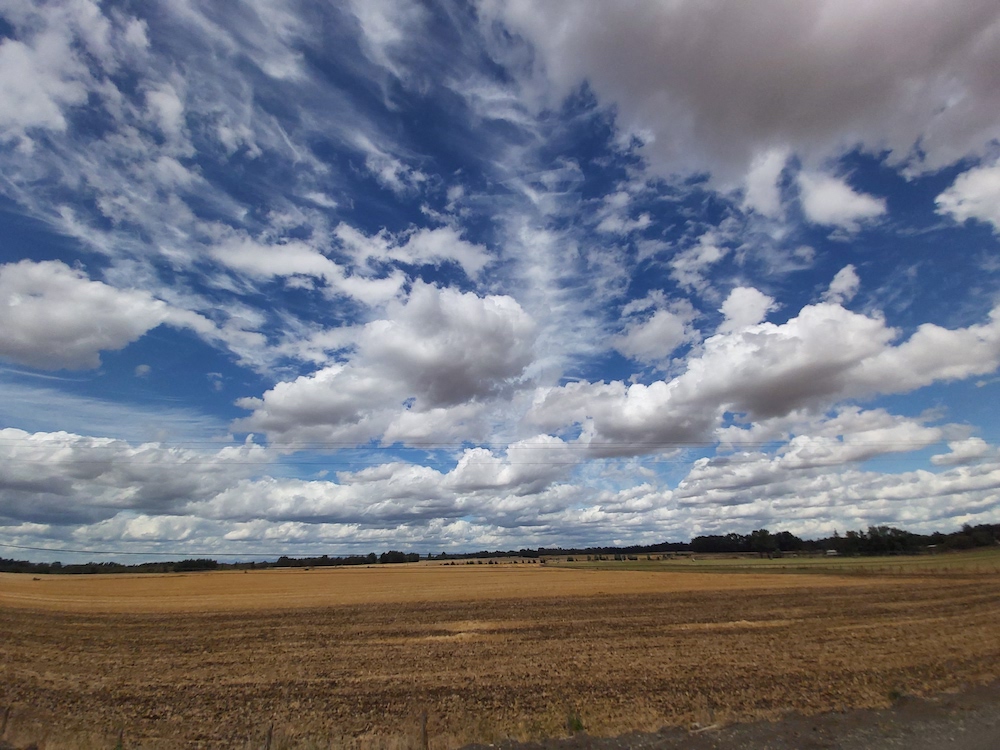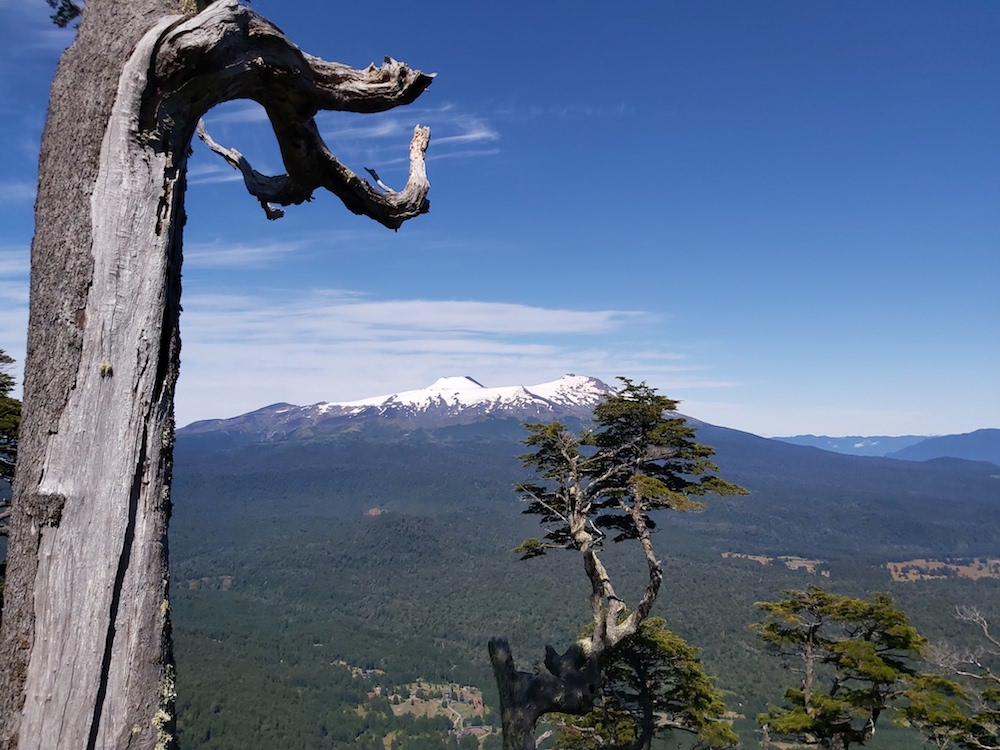MY (PHOTOGRAPHIC) NEWS SECTION:
Welcome to my news photo-blog! Below there is a selection of
images, related to my trips, work and other activities that I have
carried out or participated in, either in Chile or abroad. All
photographs have been taken by myself (© R. Demarco, 2014-2022), unless
explicitly stated otherwise.
December 21st, 2020: An extremely unique moment in modern
history: the extreme conjuction of Jupiter and Saturn, not
seen by
humans in the last 800 years. An event like this occurs once
every
400 years. However, the last time it happened it was during
day
time. On December 21st, 2020, both planets could be seen apart
from each other on the sky by only 1/10 of a degree, the
equivalent of 1/5 of the Moon's angular diameter. Remember,
this
is just a projection effect. In reality, both planets were
more
than 700 million km apart in space. In the image, taken with
my
Nikon D7200 and a zoom lens at a focal length of 300mm (f/13),
Jupiter is up and left with respect to Saturn. If you look
very
carfully, you can sort of see a hint for Suturn's rings. Given
the
low elevation of the pair with respect to the horizon, the
atmospheric seeing prevented a better image quality.

December 14th, 2020:
A sunny evening in Villarrica after a very clouded and rainy
morning and afternoon. The Villarrica lake offers an ideal
environment for flora, fauna, and people to develope a variety
of
activities, some necessary for life, some just for
leisure. Among
the birds that can commonly be seen around the Villarrica lake
are
Andean seagulls (3rd picture from top), Chimango caracaras
(a.k.a. Tiuques; 4th
picture from top), and Black-faced ibises (a.k.a. Bandurrias;
5th picture from
top). The two photographs at the bottom were taken by Isabel
Rivera. This was a very special day: a total solar eclipse
cast
its shadow over Villarrica around 1 PM local
time. Unfortunately,
the weather made it impossible to enjoy the solar Corona and
the
amazing show put up by the Sun and the Moon.

December 13th, 2020: The Villarrica volcano seen from the
homonym city. Surrounded by forests (composed by endemic
species)
at its base, the slopes of volcanic soil, snow and ice
converge at
the summit located at 2,847 meters of elevation. The crater,
seen
in the image, displays a clear fumarole, an unequivocal sign
of
the ongoing activity of the mountain. In a geological
timescale,
Villarrica is in eruption since at least the 1500s. What we
usually call eruptions have ocurred in 1963, 1964, 1971, 1972,
and
2015. The volcano usually generates strombolian eruptions
characterized by the ejection of incandescent pyroclasts and
lava flows.

November 27th, 2020:
A garden full of life. Plants, birds, and insects coexist in
perfect armony at my backyard. A bumblebee enjoying the pollen
offered by one of the flowers of my Indian mallow (top
photograph), while a "Zorzal" takes a break under some ferns
in a
corner (bottom image).

November 21st, 2020:
A bumblebee on final aproach to one of the flowers of the
Indian
mallow tree in my backyard. Another difficult-to-capture
image,
one of many attempts. The photograph was obtained with a focal
length of 300mm (f/6.3) and an exposure of 1/250 of a second.

June 6th, 2020: yes, you are right. You are looking at the
tongue of a hummingbird! The high contrast made it easier to
observe, however, not necessarily easier to
photograph. Hummingbirds use it to drink, to obtain nectar from
flowers. The remarkable anatomical detail is that the tongue is
long that when it is retracted it coils up inside the head of the
bird, around the skull and eyes. The anatomical structure of the
tongue makes it possible to absorb the the nectar via capillary
action, helped by gravity (yes, note that hummingbirds tend to
drink from
below the flower; see photographs below) and because a hummingbird
is able to flick its tongue into a flower up to 18 times a second!
Amazing!

June 1st, 2020: an amazing hummingbird getting food from
the tree in my backyard. Very hard to catch! The photographs were
obtained with my Nikon D7200 and a 300mm zoom lens (f/5.6), shooting at
a 1/1,250 of a second with an ISO of 800. The red flower is that
of an Indian mallow or Abutilon tree. The distance to the subject
was a couple of meters. These two images were selected among more
than 70 shots.

May 24th, 2020: a "Zorzal" in my home's backyard.

February 4th, 2020: a beautiful day with gorgeous clouds on
the way back from Villarrica to Concepción.



February 2nd, 2020: the second and last day of a wonderful
trip to the mountain area of the lakes zone in the Araucania Region
in Chile. The first 7 photographs, from top to bottom, were taken
in the Huilo Huilo Biological Reserve area. The two mountains
portrayed in some of them are the Mocho (left) and Choshuenco
volcanos. A cable car takes visitors to a neighbouring summit
where people can enjoy a magnificent view of the overall
landscape. The bottom two pictures were taken on the way back from
Neltume to Villarrica. The one before last shows the beautiful
silhouette of the Villarrica volcano, whereas the last image shows
the impressive Lanín volcano, on the border between Chile
and Argentina, seen from the Calafquén lake.



February 1st, 2020: A fascinating trip to the mountain area
of the Araucania Region in Chile. Forests, lakes, rivers, and volcanoes
shape the land giving it its exuberant beauty. In direction to
Neltume, we drove in-between lakes and forests on a road known as
"Circuito Siete Lagos", passing by pretty towns such as
Choshuenco. From top to bottom, the pictures correspond to: forest
in the vicinity of Choshuenco; the Panguipulli lake seen from the
beach of Choshuenco; leaf and a kind of caterpillar at the Huilo
Huilo Biological Reserve; a walk into the forest at the Huilo
Huilo Biological Reserve; the "Salto del Puma" waterfall; and a
view of the "Estero Quebrada Onda" from near the waterfall in
direction to the joining point with the Truful river.

January 10th, 2020: Once again, and for one last time, the
Symphonic Orchestra of the Universidad de Concepción and I
got together to perform the successful "Estréllate con La
Música". This time, it was on the university campus itself,
where about 4,500 people enjoyed the outdoor show. This
performance, preceded by a public talk by renowned astronomer
José Maza, marked the start of the univerity's Summer
School in celebration of its centennial. In the photograph, me (in
NASA astronaut outfit) -the narrator- posing together with some of
my good friends from the orchestra. From left to right: Francisco
Nuñez (main conductor), Pamela Astorga (violinist), and
Jaime Cofré (hornist and conductor). Photograph taken by
Verónica Lamperti.



